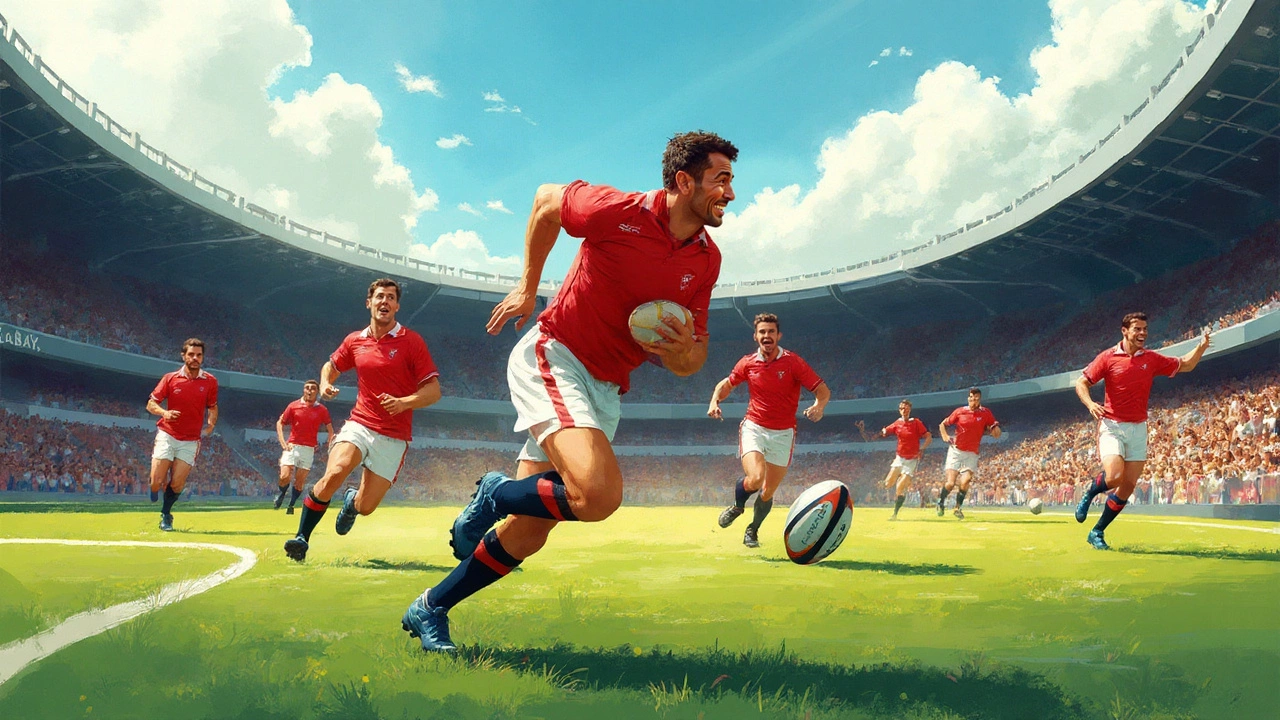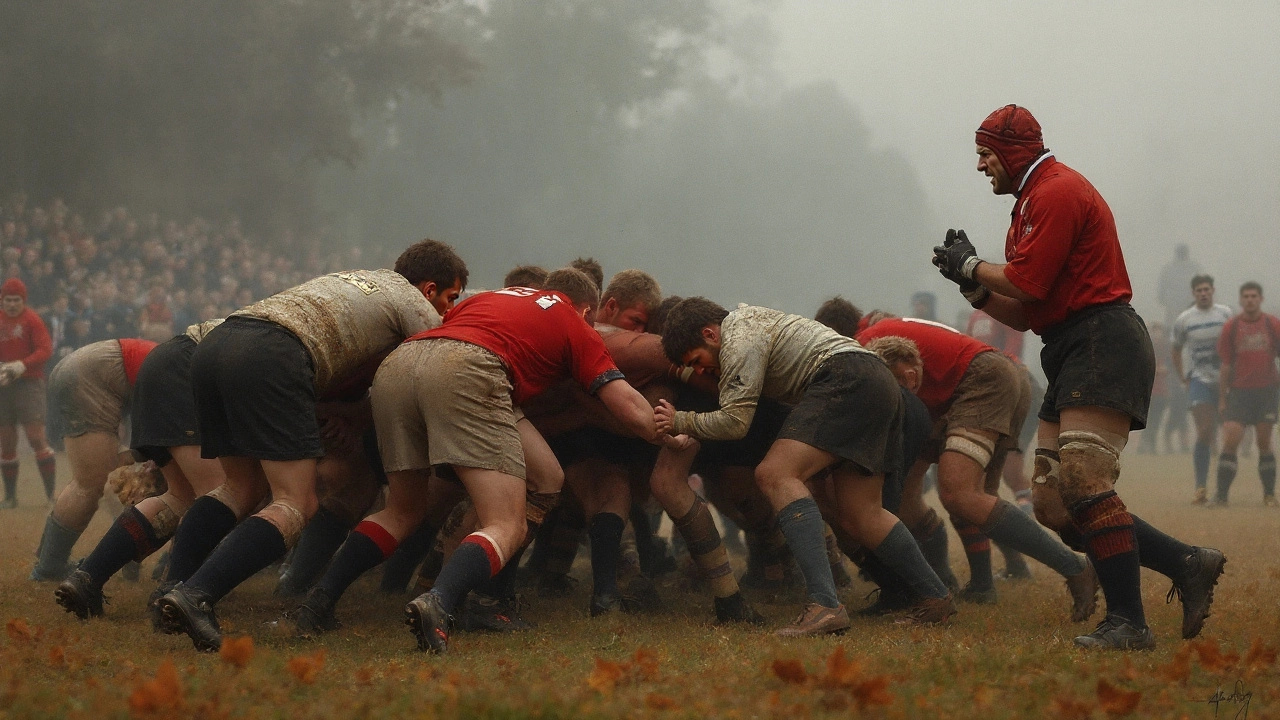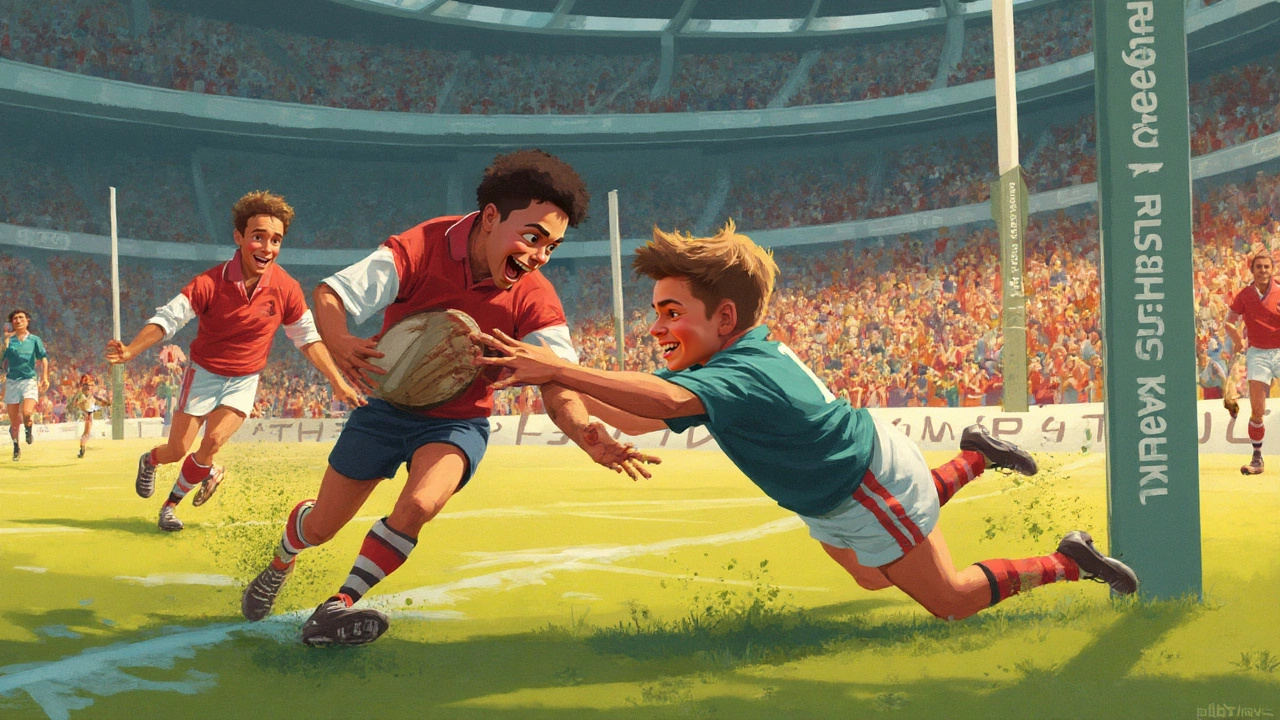Five Essential Rules of Rugby: Simple Guide for Beginners

There’s something raw, real, and exhilarating about rugby. All it takes is one noisy scrum or a perfectly timed tackle to get hearts thumping—whether you’re out on the muddy field or yelling at the TV. But have you ever stopped and thought: Hang on, what actually keeps such a chaotic-looking sport running smoothly? The chaos has its own set of rules—five of them stand above the rest. And no, knowing them isn’t just for players; they make matches way more fun to watch (and argue about).
The Scoring System: How Points Are Won
Scoring in rugby is more than just getting the ball over the line. There are different ways to collect points, and believe me, each one sparks a different reaction in the crowd. Let’s break it down:
- Try: This is rugby’s ultimate goal—a player grounds the ball in the opposition’s in-goal area. It’s worth 5 points and usually draws the loudest cheers. If you see players diving or sliding dramatically, that’s often them scrambling to score a try before a desperate tackle brings them down.
- Conversion: After a try, the team gets a shot at two extra points by kicking the ball through the uprights. It’s not as easy as it sounds—wind, pressure, and weird angles make it tricky. And unlike American football, the kicker lines up from where the try was scored, not dead center.
- Penalty Goal: For some fouls, you get the chance to kick for three points. These kicks can change the whole vibe of a game, especially if the score is close and the clock’s running down.
- Drop Goal: This is a cheeky way to add three points. The player drops the ball onto the ground and kicks it as it bounces up. It usually surprises the opposition and sometimes the fans too.
Here’s some rugby pub trivia: Jonny Wilkinson’s drop goal won England the 2003 World Cup, and that moment is still feasted on in highlight reels. For a first timer, it’s worth watching that 17-second clip—you’ll suddenly appreciate how a single kick can become legend.
| Scoring Type | Points |
|---|---|
| Try | 5 |
| Conversion | 2 |
| Penalty Goal | 3 |
| Drop Goal | 3 |
Fun tip: The World Rugby record for most tries by a single player goes to Daisuke Ohata of Japan, with 69 tries. Next time you’re watching any match, betting on who’ll get the try is a good way to spice up your group viewing.
Passing the Ball: The Backward Rule
If you ever catch yourself yelling, “Why didn’t he just throw it forward?”, you’re not alone. Rugby’s passing rule is a stubborn one—and it trips up countless newbies. The ball must always be passed backward or sideways. Forward passes get the whistle blown and play stopped, which leads to those famous scrums you see in highlight reels.
Why so strict? The game is built on territory and teamwork, not just brute force. That backward pass rule means players have to be creative—there’s lots of clever running, decoy moves, and split-second choices. It’s a rule that secretly makes rugby stand out from other sports.
During fast breaks, players have to judge the speed of their teammate, their own, and defenders barreling toward them. The margin for error is slim—one arm slightly in front, and the pass is pulled back for a scrum. If you want proof of how tough it is, even the best screw up. Just search for “rugby forward pass fail” and you’ll see that professionals can get just as frustrated as the rest of us.
So, how do teams get around this? Lots of practice, obviously—but also super tight formations like the “pods” you’ll hear commentators talk about. And that’s why it often looks like a choreographed dance: players looping around, screaming for the ball, but never risking that forbidden forward fling.
Quick tip for players: Keep your hands facing your own goal-line when you pass—it helps avoid the infamous “forward pass” penalty, which has canceled out more tries than fans care to count.

Tackling and the Tackle Laws
Rugby tackles are infamous for being hard-hitting, but they’re not a free-for-all. There are clear laws on who you can tackle, how you can do it, and what happens right after. Honestly, if you learn this one well, you’ll avoid giving away penalties or risking a stint on the sideline.
- Only the player with the ball can be tackled. Sounds obvious, right? But in fast play, getting this wrong invites a penalty or, worse, a yellow card.
- Tackles must be below the shoulders. Anything above counts as “high” and risks a penalty or a trip to the “sin bin” (that’s rugby’s version of a time-out for naughty players—usually 10 minutes off the field).
- After a tackle, the player has to release the ball straight away and roll away. This keeps the game moving and stops a huge pile-up. The tackler must also let go of the tackled player.
One fact that surprises people: Rugby’s tackle count in a typical match is around 200–250 per team. Compare that to American football with its armor, and you start to see the stamina (and, honestly, pain tolerance) required.
Tip: In modern rugby, “chop tackling” (aiming very low at the legs) is popular because it’s effective and less likely to be flagged as dangerous—but it carries its own risks, especially if you mistime it and get a knee to the face.
The phrase “no hands in the ruck” comes from this part of the game. After a tackle, players create a “ruck”—a mini battle for the ball. Hands must come off, or you’ll see the ref whistle for a penalty every time. Next time you watch, keep your eyes out for this; it looks messy, but it’s rule-bound chaos.
Offside: Staying Behind the Line
If you want a single rule that constantly confuses newbies and angers die-hards, it’s offside. But it’s also the rule that stops the game from turning into a mindless overlap of players everywhere. Here’s the nutshell version: players must always be ‘behind’ the ball. If you’re ahead of the ball during most parts of play and get involved, you’re offside, and that’s a penalty.
During set pieces such as scrums and lineouts, there are extra lines you can’t cross until the ball is out. For example, in a scrum, the offside line runs through the back foot of the nearest player in the scrum. In open play, it’s simpler—the ball itself is your guide.
It’s policing this rule that often catches out even seasoned pros. Sometimes, you’ll see a winger race onto a loose ball only to get flagged back, having gotten a little too eager. Or a sneaky defender will sneak forward before the opposition kicks, only to have the ref or assistant spot them. If you want to sound smart among rugby fans, point out those sneaky “offside traps” defenders use to close down attack lines.
Tip: If you’re watching live, keep an eye on the referee’s assistant (touch judge) with their flag—they’ll often be lining up with the offside line and can spot infractions long before the casual fan does. Also, fun detail—the word 'offside' first showed up in rugby rule books in the late 19th century, so it’s not just a modern headache.

Rucks, Mauls, and Set Pieces: Keeping Play Fair
Finally, we come to the heart of rugby’s physical side—those moments when the scrum or a maul seems to become a controlled brawl. The rules about how these play out are probably the least clear if you’re new, but they matter big time.
- Scrum: After minor infringements or forward passes, the game restarts with a scrum. Eight players bind together in three rows and push against the opposition—trying to roll the ball backward so their side can pick it up. It’s brutal, and there’s a lot of technique to avoid collapsing (which brings a penalty and can be dangerous).
- Lineout: When the ball goes out of play along the sidelines, teams form a lineout to throw the ball back in. Players lift their teammates high into the air (yes, even bigger players!) to catch the throw and regain possession. It looks almost balletic—but if there’s interference or the throw isn’t straight, the ref blows it up.
- Ruck: When the ball is on the ground and players converge round it after a tackle, a ruck forms. Players can only use their feet to move the ball—not their hands—and everyone has to come in from the correct direction, no “side entry” allowed. The ref watches closely, because getting this wrong is one of the fastest ways to give away a penalty.
- Maul: If the ball carrier stays on their feet and gets held up by teammates and opponents, a maul starts. Everyone tries to drive the maul forward—nobody can drag it down (that’s dangerous), and nobody can join from the side.
| Set Piece | Purpose |
|---|---|
| Scrum | Restarts play after minor violations |
| Lineout | Returns the ball after it goes out on the sideline |
| Ruck | Competes for ball after tackle with ball on ground |
| Maul | Competes for ball while it’s held off the ground |
A bonus tip: Watch professional teams’ set piece stats—some have a 95% scrum win rate at home (New Zealand’s All Blacks and South Africa’s Springboks absolutely dominate here). These little stats can help you predict which way a match might tip.
Rugby’s not just about size and strength—the best sides know how to use these restart moments to their advantage: sneaky lineout moves, solid scrum drills, and razor-sharp ruck play. That’s where matches are often won or lost when both teams look evenly matched running at each other.
So, those are the five rugby rules that keep everything running—scoring, passing, tackling, offside, and set pieces. They make rugby way more than just a muddy pile-up—it’s actually a fast, strategic, surprisingly elegant sport. Next time someone tries to tell you rugby is just about brute strength, you’ll have five pretty good arguments to set them straight.
